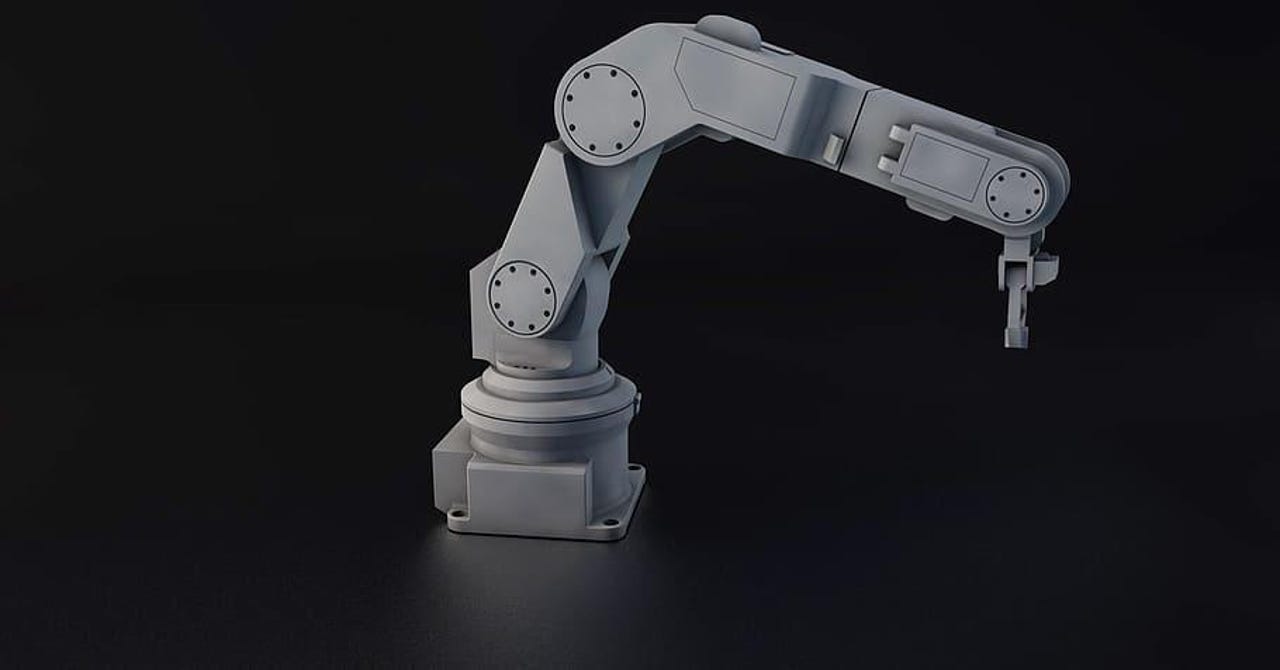Company's call to arms: Free robots from cages


A robotics company hoping to free industrial robots from their cages has teamed up with Siemens to simulate and validate the way industrial automation is deployed on the line. It's another step toward what could be the next major revolution in industrial automation.
Some context: Big robots have traditionally been kept behind cages and well clear of people on industrial lines. That because the robots, while excellent at repeatable tasks, weren't great at dealing with unexpected variables, including human workers, whom they tended to, well, crush.
One of the major innovations in the robotics sector in the last decade or so was the introduction of collaborative robots or cobots. These robots used technologies like force sensors and machine vision to ward against injuring humans. If you put your arm in the path of a cobot at work, it's sensitive enough to stop before any real damage is inflicted. The cobot revolution has made industrial automation much more accessible to SMBs in areas like small components manufacturing and biotech.
But there's a catch: Cobots are pretty small, and therefore of limited utility for many applications, compared to their industrial automation forebears. It just hasn't been considered safe, even with the most sensitive force-sensing technologies, to put a massive robot to work next to a human worker.
That's changing, and it could mark a real epochal shift in automation. Realtime Robotics has been one of the companies at the vanguard. The firm developed a specialized processor to generate safe motion plans in milliseconds for industrial robots and autonomous vehicles. Its solution enables robots to function together in unstructured and collaborative workspaces, as well as react to dynamic obstructions the instant changes are perceived.
As Chris Harlow, Director of Product Development at Realtime Robotics, told us late last year: "Demand for power and forced limited robots (cobots) has peaked due to reduced functionality and capabilities," says Harlow. "By 2025 manufacturers will no longer be investing in these systems, and traditional cobots will be replaced by better technology for the human-robot workcell."
Part of that shift will be driven by the increasing capabilities of traditional industrial robots, which have long been confined to cages but are starting to work alongside humans thanks to advanced vision systems and a host of other safety features, as well as advanced simulation technology.
Enter Siemens, a purveyor of one of those simulation technologies. Realtime and Siemens Digital Industries Software division recently announced a strategic partnership to use Realtime's solution with Siemens' Tecnomatix Process Simulate, simplifying robot programming and workcell coordination by automating motion programming. Currently, multi-robot workcells take huge amounts of time, as well as scarce engineering resources, in the simulation phase before going to production. What's more, once deployed, those robots are inflexible, requiring significant re-programming for every modification. This has made multi-robot workcells cost-prohibitive for all but the most stable high-volume manufacturing.
Siemens' industry-leading Tecnomatix Process Simulate, coupled with the Realtime Controller and RapidPlan software, could simplify the programming of industrial robots, reducing the time to deploy and adapt to changes. According to the companies, joint customer proof of concepts show programming cycle time reductions of over 70%, enabling quicker, more robust deployments.
All of this could spell quicker adoption of a new kind of industrial robot, one that has all the power of hulking behemoths you'd find in a GM plant but that's safe enough for human workers to be around, increasing production output.
"Our partnership with Realtime Robotics reflects a paradigm shift in the way robotic applications are programmed and deployed," says Zvi Feuer, Senior Vice President MFE, Siemens Digital Industries Software. "Together we have created a unique value proposition that will open up a world of possibilities for robotic automation."